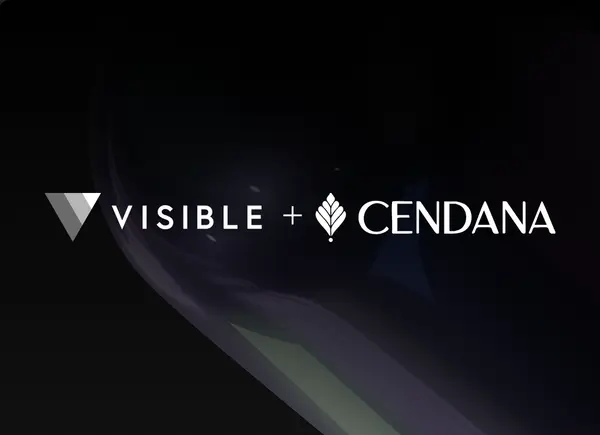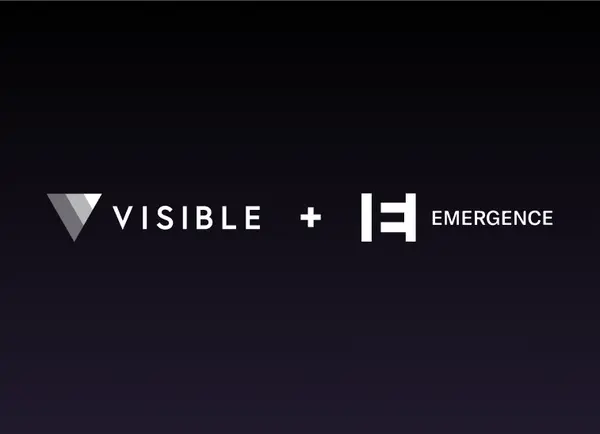Securing venture capital for a startup is difficult. On top of having a business or product that is fundable, you need to have an approach to how you reach out and engage with investors during the process.
At Visible, we oftentimes compare a venture fundraise to a traditional B2B sales process. You are adding investors to the top of your funnel, nurturing them with meetings, emails, and pitches in the middle, and hopefully closing them at the bottom of the funnel.
Related Resource: How to Secure Financing With a Bulletproof Startup Fundraising Strategy
Learn how you can craft a strategy to reach out and engage with potential investors below:
Step-by-Step Guide to Investor Outreach
As we mentioned earlier, fundraising can mirror a traditional B2B sales process. Just as you have a step-by-step process for reaching out to potential clients, you should have the same for investors. Check out a few of our recommended steps below:
1) Understand the Market
First things first, you need to understand the market to help understand why an investor would want to fund your business. Ultimately, you need to understand the person you are “selling” to. This will be incredibly important when it comes to crafting your investor list as well.
To learn more about the venture capital industry check out our post, “A Guide to How Venture Capital Works for Startups and New Investors Guide.”

2) Research Your Target Investors
Just as you would build a list of potential customers that fit your ideal customer profile, you can do the same for a fundraise. Fundraising becomes a full-time job for many founders so it is important to make sure you are spending your time on the right investors. A couple of filters/fields we recommend starting with:
- Location
- Market focus
- Stage focus
- Check size
- Fund size
- Portfolio makeup

Learn more in our post, “Building Your Ideal Investor Persona.”
Use Visible Connect, our free investor database, to filter and find the right investors for your business.
3) Build a List of Potential Investors
After you have a thorough understanding of your ideal investor, you’ll want to start building out a list of potential investors. Generally speaking, founders should talk to 60+ investors during the course of a fundraise (of course this number differs from company to company).
You can use Visible to upload your list of investors (or add them directly from VIsible Connect) and track conversations. Give it a try for 14 days here.
4) Draft Your Outreach Email or Use a Template
Once you’ve got your list of investors together it is time to craft messages to reach out to everyone. Cold email investors comes down to a fine balance between personalization and focus. Check out some tips and a template to get you started in our post, 3 Tips for Cold Emailing Potential Investors + Outreach Email Template.
5) Perform Your Outreach
Of course, putting everything in place is only half the battle. You need to start actively reaching out and moving investors further through your funnel. One of the strategies we recommend here is from the team at First Round review. As they wrote in their post,
“Group investors in batches to better evaluate and select them, like a surfer scanning sets of waves that move toward the shore…
Say you have a dozen partners at firms who might make a good fit. Don’t group all your top choices in the first set of five. Pick two or three of your highly-ranked VCs and round out the set with lower priority firms.
Even if you’ve rehearsed your pitch, you’ll continue to refine it, so diversify your schedule to account for that learning curve. It’s going to take some time in market to perfect the actual pitch. That said, don’t leave all your top picks until the end as they’ll be very out of sync with your process if in a later set. It’s a balancing act.”
In order to better monitor your raise, you should have a tool or system in place to keep tabs on the status of your round. Check out our Fundraising CRM and give it a free try for 14 days here.

6) Prepare Your Marketing Materials and Create a Pitch Deck
Inevitably, investors will ask for different assets, metrics, materials, etc. throughout a raise. We encourage founders to have them prepared in advance so they can respond to an investor quickly and efficiently.
If you survey a set of investors, they will likely all offer different feedback on when, how, and where to share a pitch deck. Some investors (like Brett Brohl, check out his interview with us above) recommend sending a “teaser deck” in advance of a meeting. This should give investors the context they need to have a productive conversation and avoid spending time going over the basics of your business.
Check out our Teaser Pitch Deck Template here and our other tips for creating a pitch deck here.
Related resource: 23 Pitch Deck Examples
7) Follow-up With Potential Investors
Any good outreach strategy has a set plan for following up with targets. It typically depends on the conversation and if expectations were set but we recommend following up a week or so after if an investor has not responded. However, if you have had contact with a potential investor you should set expectations with them on how and when you will follow up.
For example, if you speak with an investor and your company is too early for them, you can send them your monthly investor updates to show your continued growth and traction.
8) Track and Measure Email and Click-Through Rates
Gauging investor interest throughout a raise will be an important skill to hone. You will want to spend your time on the investors that are truly interested. Use email engagement data to uncover who the investors are who are most interested and engaged with your company.
Related Resource: How to Build a Strong Investor Relations Strategy
9) Have Productive Conversations and Close Deals
If you’ve done your homework and research beforehand having productive conversations should feel natural. If you have researched and targeted the correct investors and sent them the information they need in advance, you should be able to sit down and have a strong conversation.
Every investor won’t say “yes”, in fact, most will say “no” so it is important to stay focused and continue to have strong conversations.
Related Resource: Unlocking the Power of Thoughtful Relationships with the Founders of Clay
What are the Best Platforms For Investor Outreach?
Just as you have tools and mediums for reaching out to potential customers, the same can be said for investor outreach. Check out a few popular mediums and they can best be leveraged for investor outreach below:
Reaching out via email is generally the best method for getting in front of potential investors. It is common practice that founders will reach out via email so investors are awaiting cold emails from founders. To learn more about reaching out to investors, check out our cold email template and best practices here.
LinkedIn & Twitter
Different investors will tell you different things about reaching out via social media. Some might like it, some might not. There are countless stories of founders who have had success using Twitter for outreach. For founders that are “building in public” and sharing their story over social media, either channel can be a powerful tool for finding new investors.
Phone Calls
Cold calling is likely not the strongest channel for getting in front of a potential investor but it can certainly find its purchase throughout the process. Phone calls are generally most effective after you’ve had some prior conversation and need to catch up quickly to understand the next steps.
Visible Connect
As we mentioned earlier, Visible Connect is our free investor database that can be used to help you identify potential investors and build a list to start your outreach. Check it out for free here.
Visible
Visible helps founders communicate and strengthen relationships with their investors. You can use Visible to find the right investors, track conversations, and share Updates throughout the process. Check out an Update template you can share with potential investors and start a free 14-day trial here.

Visible is Here to Help You With Your Investor Outreach
Raising venture capital is difficult enough. Having a system in place to help you build momentum will allow you to focus on what truly matters, building your business. Build a cohesive fundraising strategy and create momentum with Visible. Try Visible for free for 14 days here.




